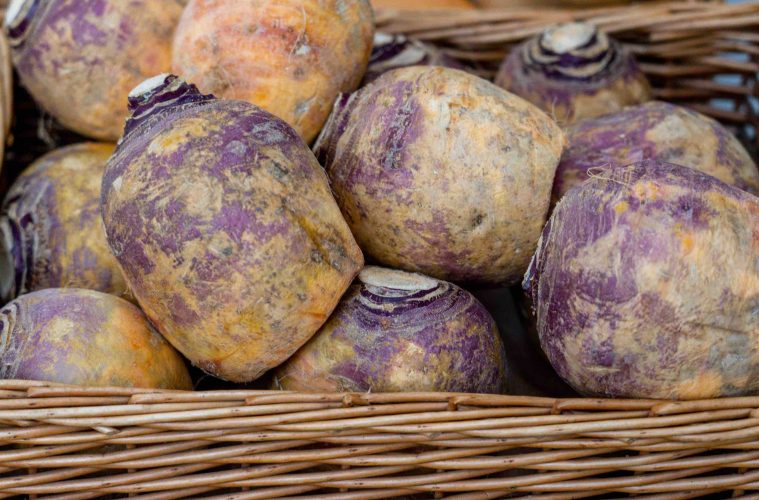Turnips are one of the oldest vegetables consumed by humans, valued for its nutrient-rich flesh and leaves and versatility in the kitchen. It’s a low-calorie vegetable packed with vitamins and minerals and dietary fibre. It’s also a good source of antioxidants and has been used as against fungal and bacterial infections and for stomach infections.
With all this good stuff packed into a root, it’s also a versatile kitchen subject which can be boiled, steamed or baked and added to soups, stews and stir fries with other meats and vegetables to make the most of its health benefits.
How To Grow Turnips
Soil Prep
Turnip seed can be sown all year round, but they do prefer the cooler months and could become bitter if the soil is too warm. As deep-rooting vegetables, the soil should be friable and prepared by adding plenty of compost to a depth of at least 20cm. Add a few handfuls general slow-release fertiliser and a few handfuls superphosphate or bonemeal and mix well.
Sowing Seed
Sow the seed in situ in shallow drills 25 – 30cm apart covered with a 1.5cm layer of fine soil. Firm down lightly and water with a fine mist sprayer so that the seed does not wash away. Keep the soil moist and within 3 – 4 days the seed should germinate.
Thin out the seed at 2 weeks and again at 4 weeks until the final spacing is 6 – 8cm apart so that the roots have space to grow beneath the soil. You can thin them out by cutting off the shoots at soil level so as not to disturb the other roots under the soil.
ALSO SEE: 4 REASONS TO GROW MICROGREENS AT HOME THIS WINTER
Care and Maintenance
Water deeply at least once a week in the growing stages to ensure proper root and leaf development. Add a layer of mulch to keep weeds down and to keep the soil moist. Look out for a deficiency of boron which can be seen by the yellowing of the leaves and treat with a fertiliser that includes this trace element.
The leaves are sometimes attacked by aphids and flea beetles. Treat as soon as you see them with a product for these specific pests.
Harvesting turnips
Turnips should be ready to harvest at around 60 – 80 days after sowing. Allow the soil to dry out before harvesting by digging out carefully with a garden fork. They can be rinsed, dried, the tops cut and used in stews and soups and the roots stored in a cool dry area.
Turnip Microgreens
If growing turnip roots is not your thing, then why not grow turnip greens for use in salads, or on sandwiches, or added to cooked dishes for extra flavour? They are easy to grow and come with all the health benefits of the fully grown turnip.
Fill a seedling tray with 1 part peat and 1 part seedling mix and water well. Sow the seed on top of the tray and cover lightly with more of the mix or a layer of vermiculite and firm down. Place in a propagator or cover with a plastic lid or plastic bag to create a mini eco system to retain moisture.
ALSO SEE: HOW TO GROW CAULIFLOWER


